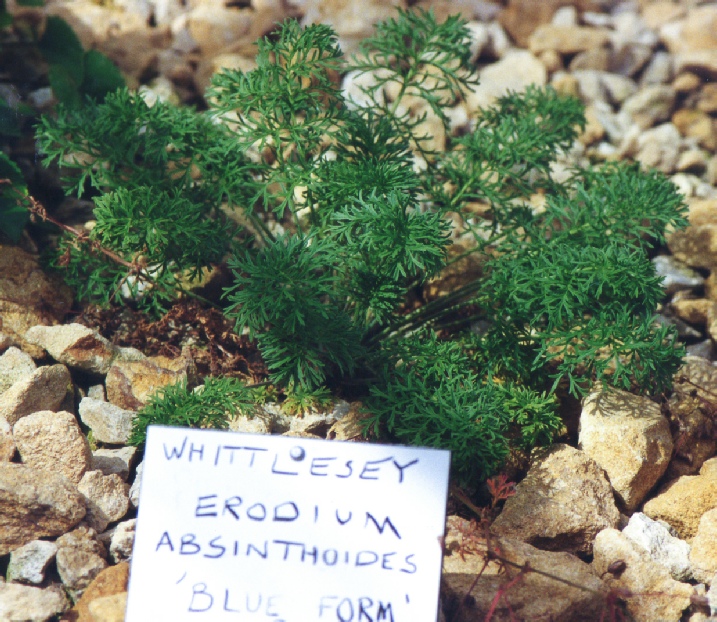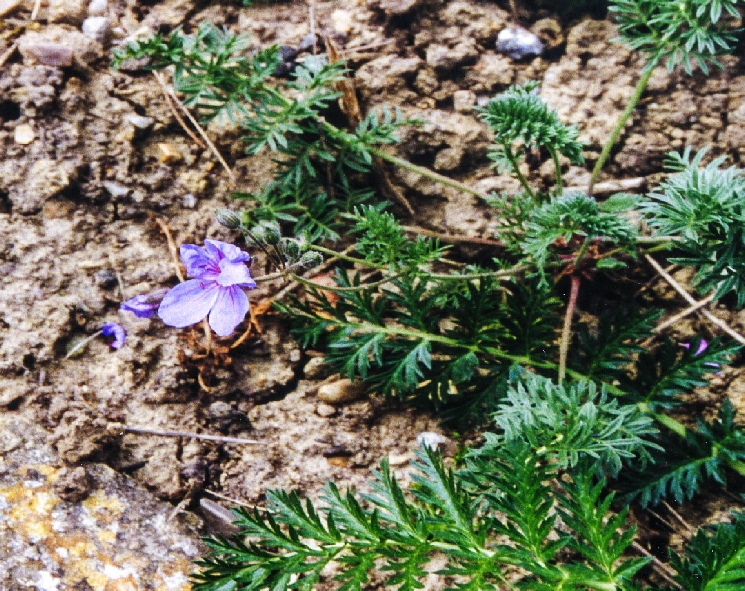Erodium
and California
This site was created and is maintained by Benjamin Coultrup.
Photos all ©Benjamin Coultrup unless otherwise indicated, 1984-
Clade I, Subclade 1
Subgenus Erodium
Clade I, Subclade 2
Subgenus Barbata
Clade II, Subclade 3
Clade II, Subclade 4
-
-
Erodium armenum (Trautv.)Woronow (syn E. absinthoides subsp. armenum (Trautv.)Davis).
This species is similar to E. absinthoides but with stems green, with patent hairs and often bearing subsessile glands.
Leaves are similar, again narrowly oblong with lanceolate acute ultimate lobes, but are greener, grey green rather than silvery, adpressed pilose.


Photos. Good reliable photos of Erodiums (except the more common species) on the internet are few and far between. You cannot just believe the names given but need to check the photos with the descriptions, and known localities for the species. The following are photos are reliable but photos of other species on the same site may not be!
E. armenum -
Inflorescence: Flowering stems again have 1 to 12 peduncles, but flowers are lavender blue, flowering much later, in July and August. Beak is shorter at 3.5 to 4cm.
Distribution: This species is found on rocky slopes at a much higher level than E. absinthoides, at 2300 to 3200m, in Armenia, Georgia and eastern Turkey, in provinces Kars, Batman, Bitlis, Erzincan, Erzurum, Van, Bayburt, an area with no overlap with the population of E. Absinthoides.
Plants in cultivation usually have much greener leaves than those in the wild.
